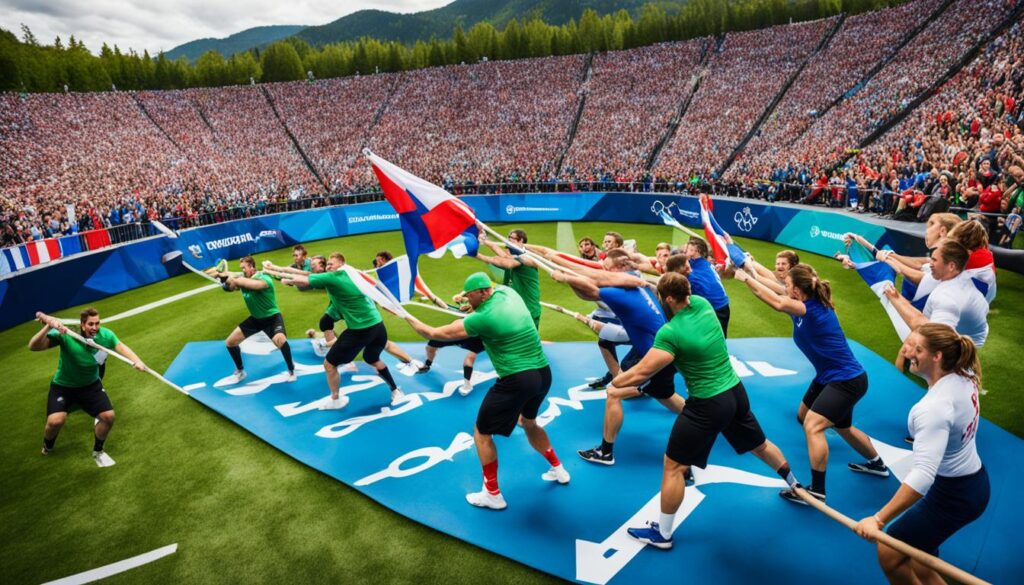Believe it or not, Olympic Tug-of-War was once a key event at the Summer Games. From 1900 to 1920, athletes showed off their strength in this rope pulling contest. The sport was part of the Olympic athletics program, drawing crowds to see these intense matches.
Teams started with six members in 1900, then changed to five in 1904. Finally, they settled on eight members for the last three appearances. This sport amazed people with its raw power and teamwork.
After the 1920 Games, tug-of-war was taken out of the Olympics. It wasn’t the only sport to be removed; 33 others also lost their spots. The International Olympic Committee wanted to make the event smaller and easier to manage.
Key Takeaways
- Olympic Tug-of-War was part of the Summer Games from 1900 to 1920
- The sport was included in the Olympic athletics program
- Team sizes varied between 5-8 members over the years
- Tug-of-war showcased athletes’ strength and teamwork
- The IOC removed it along with 33 other sports after 1920
The Rise of Olympic Tug-of-War

Tug-of-War History took an exciting turn when it debuted at the 1900 Paris Games. This ancient game became part of the world’s top athletic events. It brought a new level of excitement to this classic test of strength.
At the Olympics, clubs could enter multiple teams, giving countries more chances to win medals. This showed the sport’s true test of strength and strategy.
The Olympic Tug-of-War had its own rules. Teams of eight men tried to pull their opponents six feet back to win. If it lasted over five minutes, judges decided the winner. This made the competition intense and suspenseful.
Tug-of-War’s Olympic journey echoed ancient games, celebrating raw power and unity. Being part of the Olympics made the sport more popular worldwide.
Olympic Tug-of-War: Medals and Memorable Moments
The Olympic tug-of-war events were filled with intense competition and unforgettable moments. In 1904, the United States took home all three medals, showing their tug-of-war skills. That same year, a mixed Danish-Swedish team won gold, proving teamwork can lead to success.
Great Britain became a top contender in the sport, winning two gold, one silver, and one bronze medal. The City of London Police played a big part, with team members winning medals for three Olympics in a row. Their wins showed how important it is to work together as a team in tug-of-war.
Three London Police officers – John Shepherd, Fred Humphreys, and Edwin Mills – made their mark in Olympic history. They each won two gold and one silver medal, proving their top-notch skills and stamina. Fred Humphreys made history as the oldest man to win gold in tug-of-war at 42 in the 1920 Antwerp Games.
These achievements highlight the importance of tug-of-war rules and their role in the sport. The success of different teams and countries shows how mastering certain techniques can lead to Olympic victory in this challenging event.

Leave a Reply